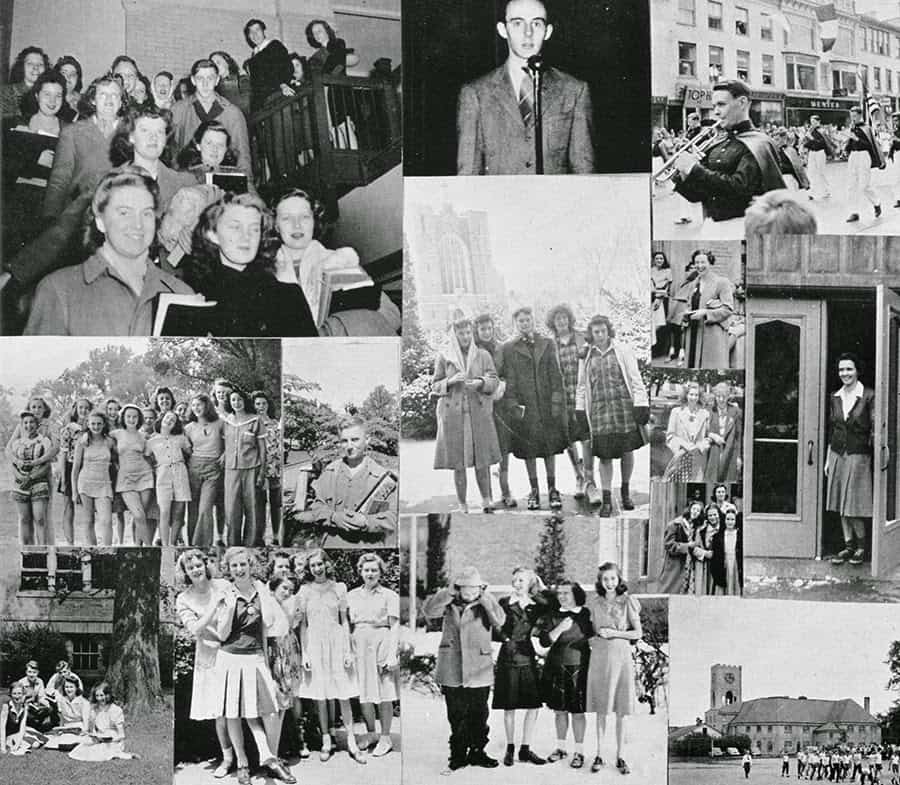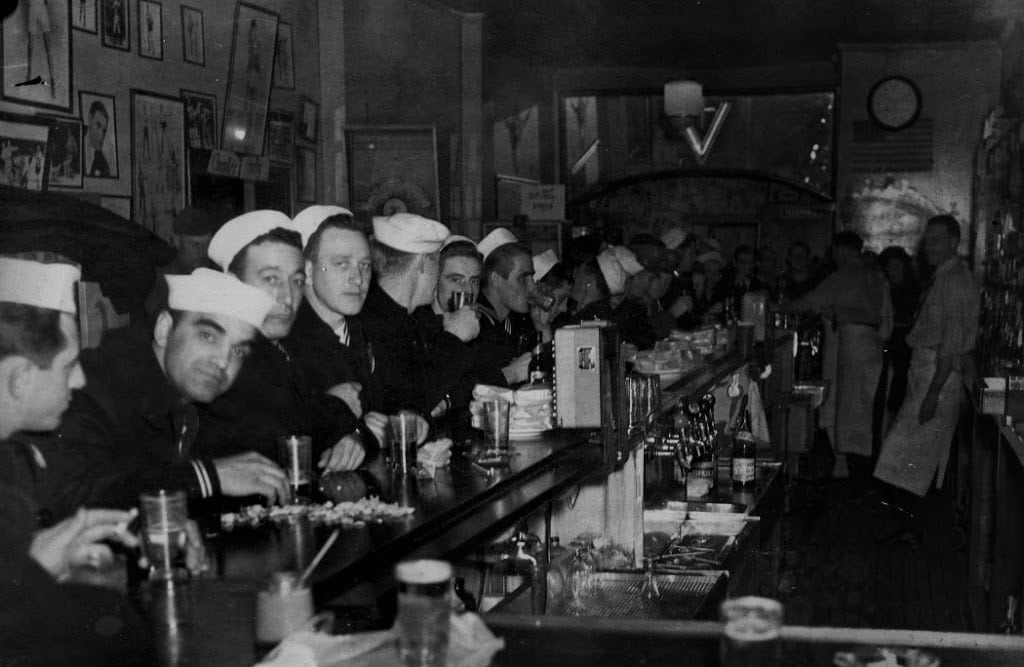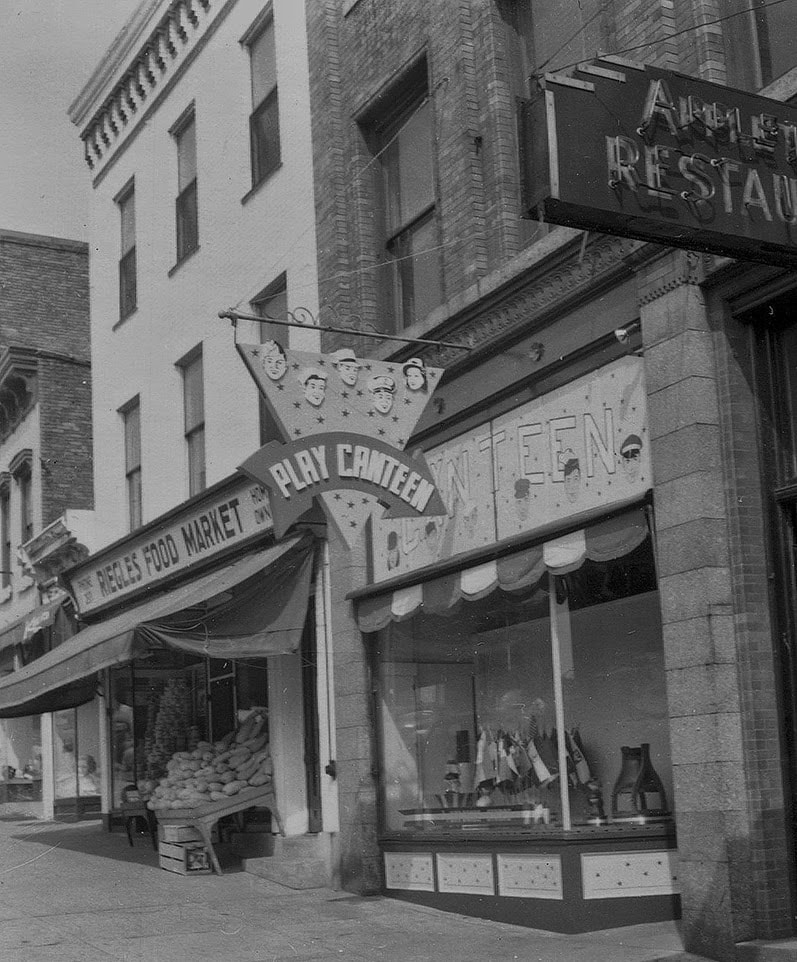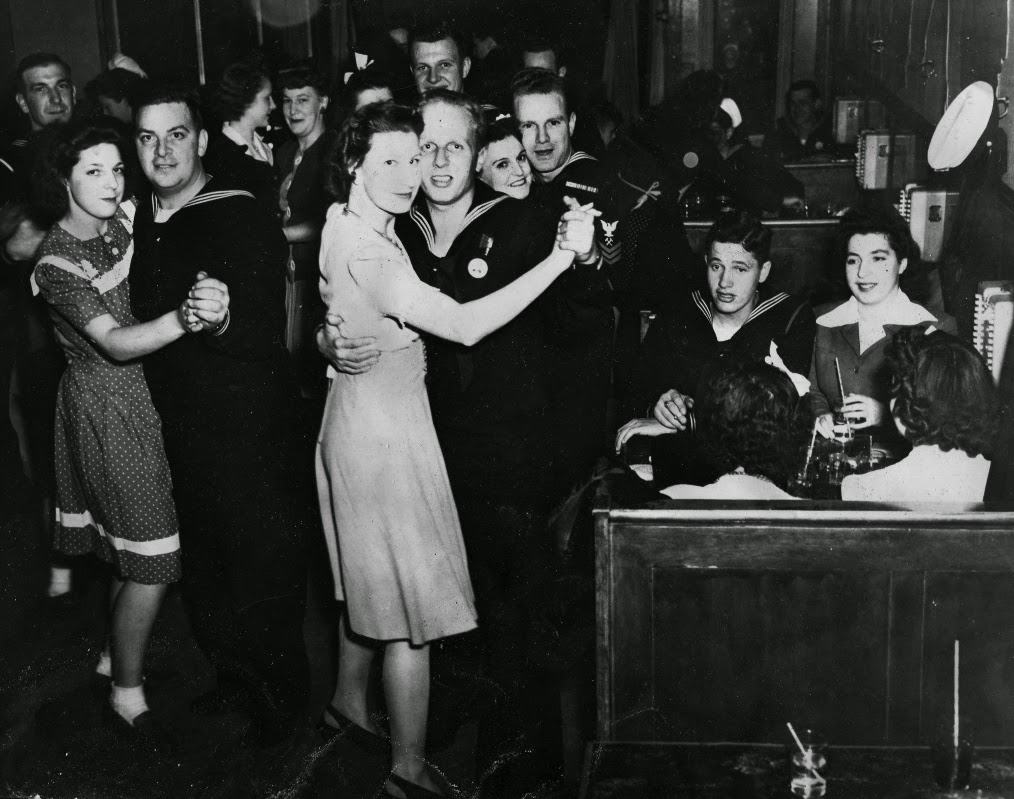Home » Blog » Geneva Teenagers and World War II
Geneva Teenagers and World War II
December 5th, 2014
By Anne Dealy, Director of Education and Public Information
 |
| Teenagers as pictured in the 1944 Geneva High School yearbook. |
With World War II came the birth of the American teenager. While we tend to associate the flowering of teen culture with the baby boomers, it was actually their immediate predecessors, the so-called “Silent Generation” who were first referred to as teenagers. Then, as always, the older generation thought that the younger generation was at best misguided, at worst they were described as selfish, willful, spoiled and delinquent.
The press frequently reported on concerns about youth behavior. As early as December 1941, syndicated financial columnist Henry Babson wrote in the Geneva Daily Times about problems with new draftees at Fort Devens in Massachusetts. It was clear where he laid the blame:
“The present generation of young people may be just as sound fundamentally as my own generation; but if so, surely they have worse parents! Today’s parents have invented and are giving to their children most dangerous doles in the form of automobiles, radios, taxis, speedboats, movies, roadhouses, dinner dances, and clothes that would have made Croesus and Midas feel like village school teachers working part time.”
The profligate attitude of young people was shown in a series of comic strips published in the same edition of the Times. The teenaged protagonist of Freckles and Friends was out to have a good time with his friends, just like adults
 |
| In 1941 Freckles and his friends just want to have fun…but like adults. |
Of course these teens end up learning a lesson with a great deal of humor, but not all treatment of teenagers was so light-hearted. Take for example, the 1943 newsreel series
The March of Time episode, “Youth in Crisis.” Boys were portrayed stealing, drinking, smoking marijuana, buying pornography, and setting things on fire. Girls were shown being picked up by servicemen, falling into prostitution and getting treated for venereal disease. Click
The March of Time to watch a clip from “Youth in Crisis.”
Despite the drama, the concerns were real. According to a Life Magazine article in December 1943, the FBI reported that in just the first 9 months of the year, arrests of children 17 and under had increased 23.6% over all arrests in 1941. Cities all over the country wrestled with the problem of youth behavior, and with a military base nearby Geneva had more problems than many communities.
The war years were challenging ones for young people in Geneva. Many saw their fathers and older brothers leave to fight in the war, while their mothers worked in factories or served as volunteers in war service work. Recreation programs and youth service organizations lost money, staff and volunteers to the war effort. The focus of the adult world was the war and the need to win it, sometimes to the detriment of young people. Men from all over the country were being trained at Sampson Naval Training Base and they overwhelmed the town, filling up theaters, bars and restaurants. Crime rose and Geneva was filled with strangers. Click
“Youth in Crisis” read the
Life Magazine article.
 |
| Sailors in Dempsey’s bar. |
As early as 1943, the Geneva newspaper reported an increase in juvenile delinquency. The problem probably emerged earlier, but the disruptive presence of so many strangers in town for the construction of the Seneca Army Depot and training at Sampson may have pushed the issue to the background in 1941 and 1942. By 1945 the Geneva’s police chief reported that two-thirds of the females arrested for prostitution in the city the previous year were between 15 and 19 years of age, one-third were just 15 or 16. He was shocked by their attitude: “I have found what is, in my opinion, a most distressing and disturbing condition, and that is the utter indifference of these teenage girls toward the serious implications of moral dereliction. …they are, for the most part, quite unashamed and oftentimes argue that they have a right to do as they choose. It is not unusual to find that it is the girl who has solicited the sailor.”
With so many older men dominating the town, many teenage girls were more interested in them than in boys their own age. Fights sometimes broke out between local boys and sailors. Girls who spent time with sailors were called sailor bait, according to Mary Hommel Guilfoose, who learned this when she went out with local boys home on leave from the navy. Sixteen-year-old Ann McCandlish became concerned about recreation for teens after witnessing girls her own age playing slots with sailors at a Seneca Street canteen.
 |
| Some girls hung out with sailors playing the slots at the Play Canteen. |
In June of 1943 the Geneva Social Planning Council “expressed the need for a locally supervised commercial endeavor to cater to some of the recreational needs of youth.” A conference was held the following month to discuss the “Needs of Youth in Wartime,” and recommendations were given to City Council, including the hiring of a policewoman who was also a trained social worker. While the aldermen agreed on the need to do something, they also recognized that the recommendations would cost quite a lot of money and appointed a special committee to consider the issue. The matter does not seem to have been revisited that year.
 |
| Women and girls socializing with sailors. |
Despite the picture of depraved teens in the media, most delinquency involved fighting and petty crimes committed by bored kids without enough to do. Plenty of entertainment had been provided for the servicemen in the area, but aside from Saturday night dances at the YMCA, Geneva’s teens found little they wanted to do but hang out on the street near favorite restaurants and diners. Mary Guilfoose and her husband Jack described these teen activities in a 1994 oral history from our archives:
Mary: Isenman’s was the place for the teenagers
Jack: It was a soda bar. We used to hang out on the corner right there. And the cop would always come and hustle you on; the cop would come by and he’d say, “Now listen. I’m going to around and when I come back I don’t want you here. We’d wait a while, and come back. That’s what you did.
 |
| Ad for Isenman’s in 1944 Geneva High School yearbook. |
The issue of the youth center revived in the fall of 1944 when Ann McCandlish wrote to the Timesrequesting the community’s support for a Youth Canteen. She stated that Geneva High School students had organized a committee to start a canteen, but had been discouraged by a lack of support from adults. A local mother responded to the girl’s letter suggesting that she should use all the free time she had to help her mother with housework, get a job or improve her mind with additional study. Nonetheless, many adults agreed that teens needed a place of their own to socialize. The city’s Social Planning Council approved the canteen and students voted to establish it in Seymour Alley, but perhaps derailed by the coming end of the war, again it did not happen. However, the arguments apparently had an effect as a Youth Bureau was established by the city in 1947, with the Civic center building at Castle and Mains Streets as its base of operations.
 |
| The Geneva High School Class of 1944 was proud of their activities in support of the war. |
Despite all the hand-wringing, only a tiny minority were committing crimes and causing trouble. Many of Geneva’s teenagers participated in the war effort. They served as USO junior hostesses, collected scrap for drives, bought war bonds, worked in civilian defense, and harvested crops for area farms. Some teenage boys went on to military service at the end of the war, during the European reconstruction, or in Korea. Then they grew up to complain about their kids’ immoral behavior at Woodstock.









